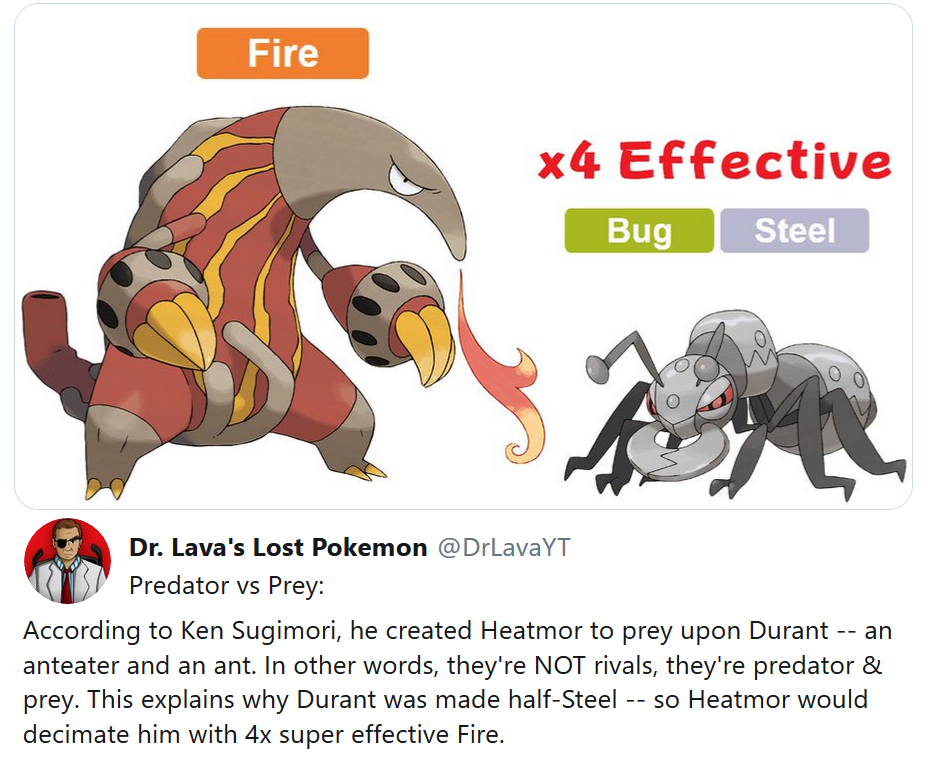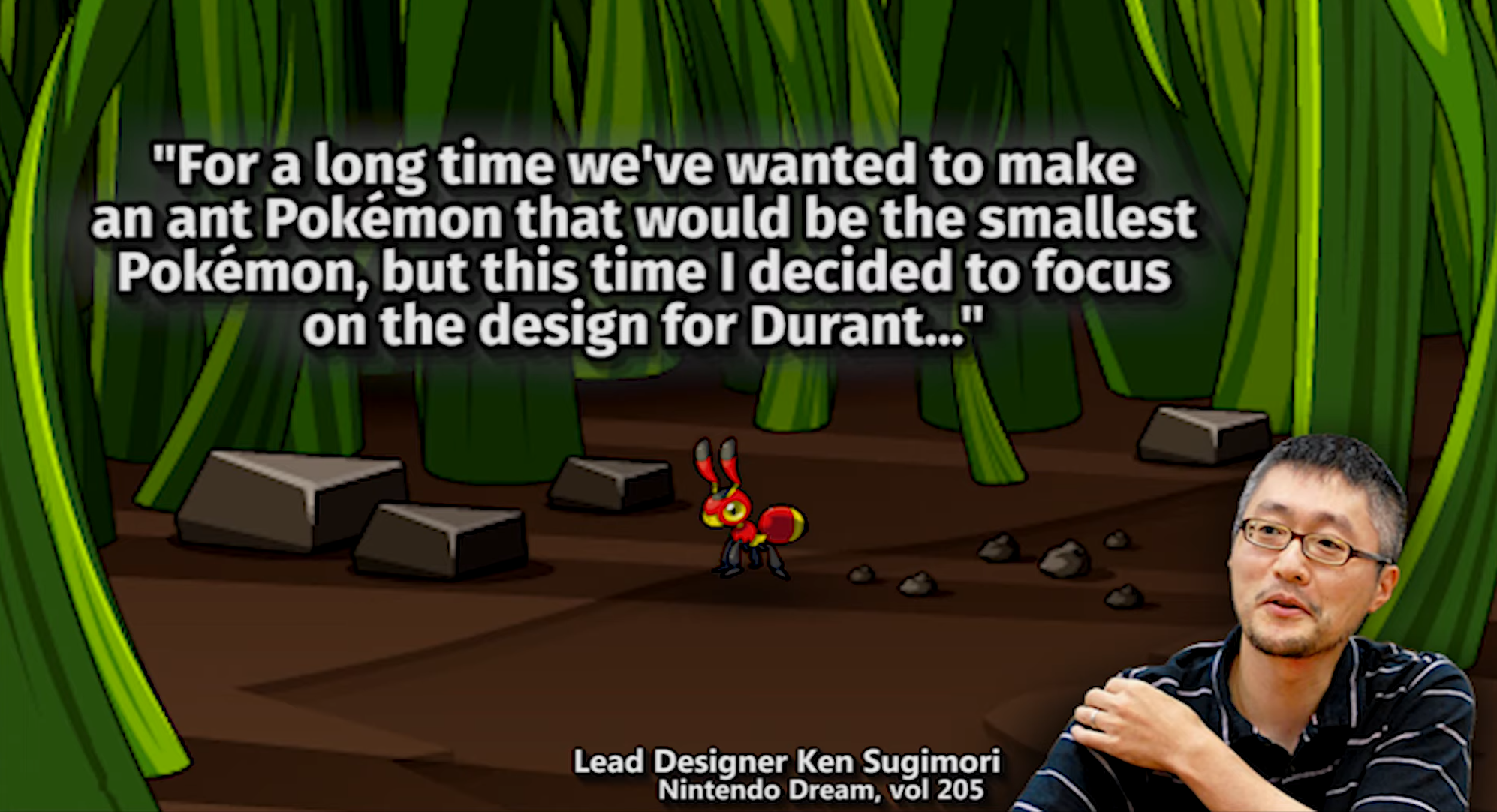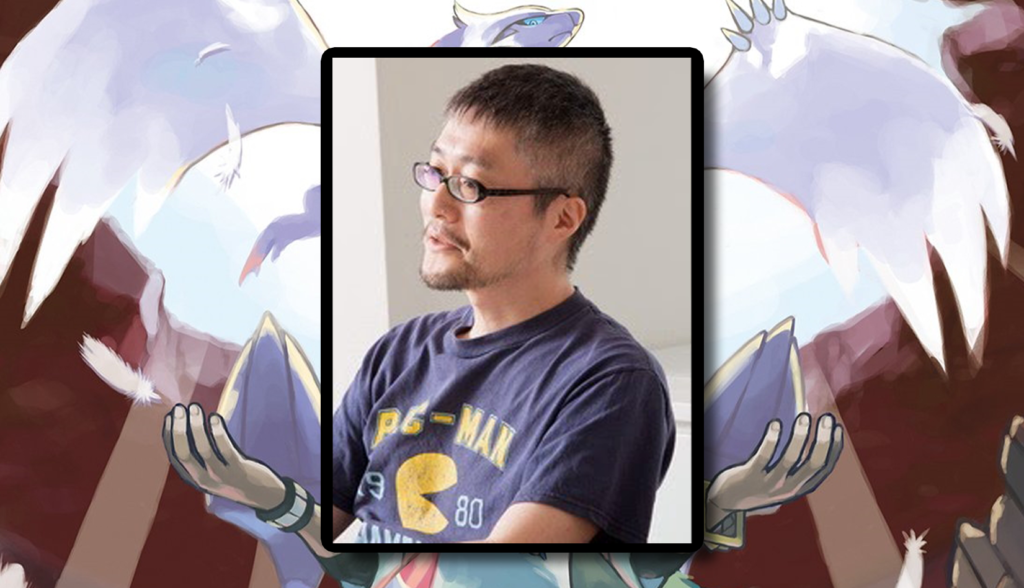
Gen 5 Historia: Pokemon Origin Stories (Part 3)
Lost Pokemon, beta Pokemon, and design origins
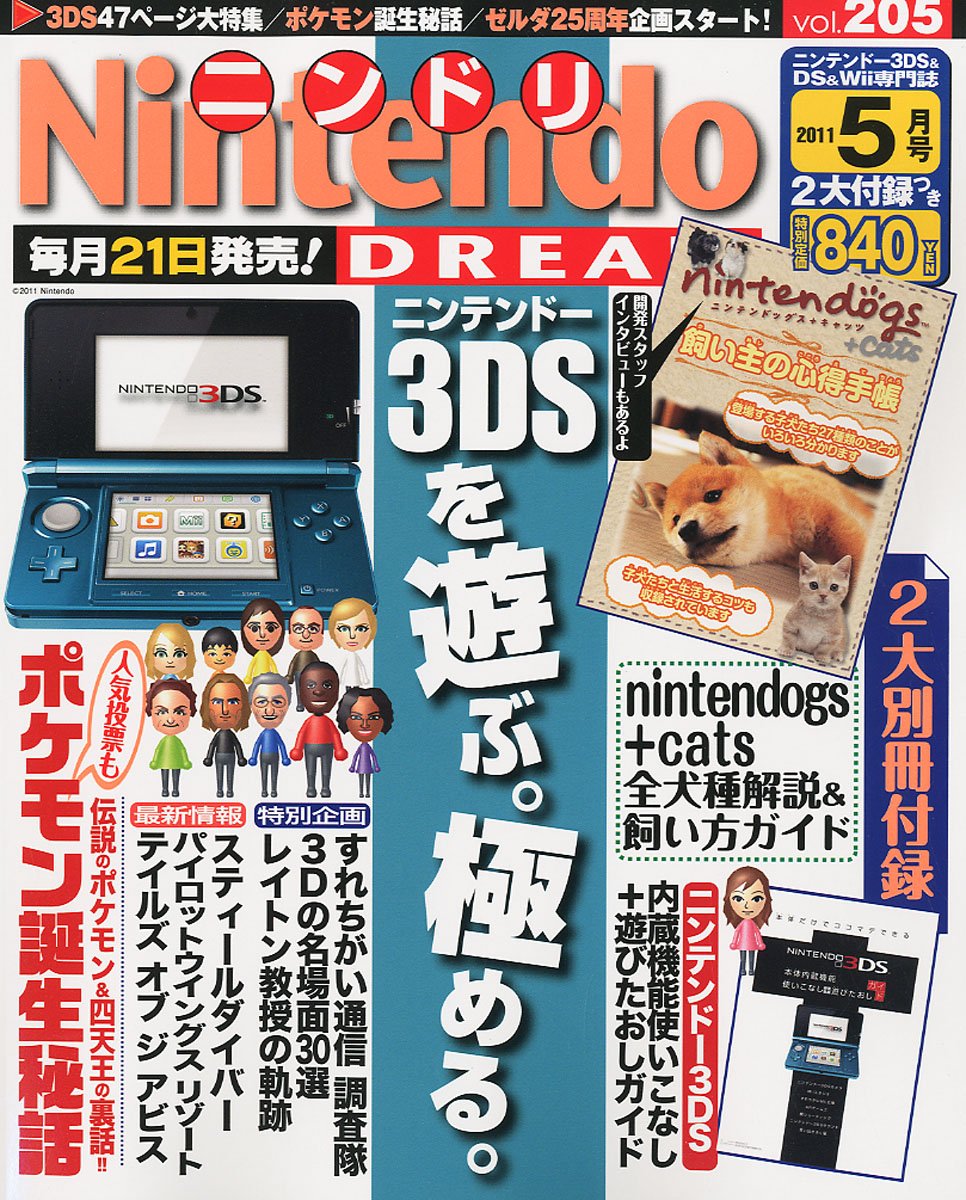
Written by Dr Lava, May 21 2019
The following interview was published in Nintendo Dream volume 205, the May 2011 edition. This was the final installment in a series three interviews taking place throughout 2011, in which over a hundred Gen 5 Pokemon had their design origins explained to the magazine’s subscribers. This is the first time this interview has been translated into English and made publicly available. The same goes for volume 201’s interview and volume 204’s interview, which have also been translated and published on this website. For this interview, lead Pokemon designer Ken Sugimori is joined by two more designers: Takao Unno (who later served as director for Black and White 2) and Yusuke Ohmura (who took over Sugimori’s position as lead designer for Sun and Moon).
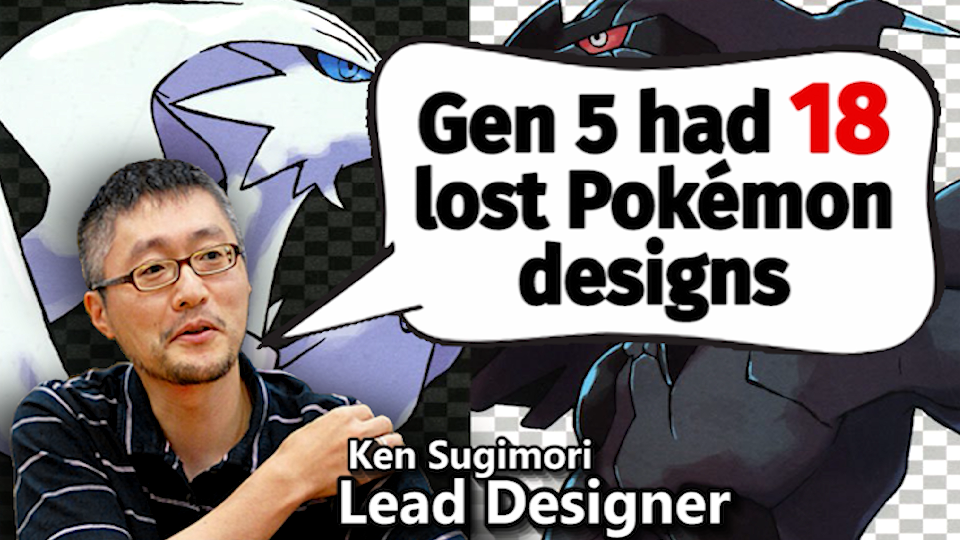
Interview Preface
Included in the interview are some fascinating revelations, particularly the ones about Tornadus, Sawk and Throh’s aesthetic revisions, the Hydreigon line’s origins as a family of tank dragons, and a long-considered but still unrealized idea for the series’ smallest Pokemon — an ant. Throughout this article, I’ll be adding some of my own commentary, labeled in italics.
If you’re interested in this kind of content, you might want to subscribe to my YouTube channel about lost Pokemon history, where information from official interviews, concept art, and internal data is documented and analyzed — for instance, many of these three translations’ highlights are analyzed in episode 21 and episode 22 of my channel. So if you prefer watching videos to reading, that might be a good way to absorb this information.
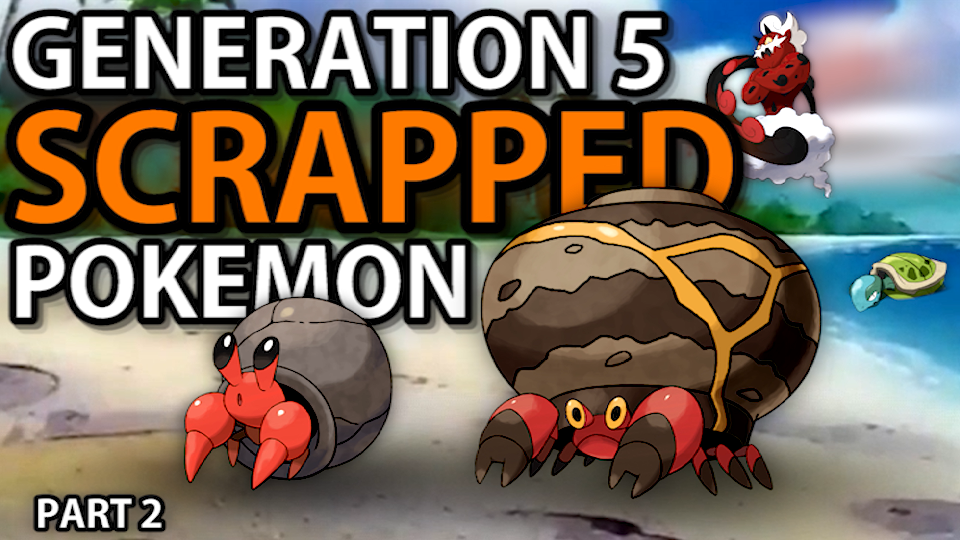
Note to YouTubers & webmasters: These translations were commissioned for the purpose of documentation on my channel, and were tracked down and translated at considerable effort and cost. But if you’re a content creator yourself and would like to share this information with your followers, that’s A-OK with me — I only ask that you take a few seconds to recommend and link to my YouTube channel for the translation, as this website is an extension of my channel. When large websites and YouTubers repost my work without citation — thereby claiming all the credit and traffic for themselves — it makes these projects more difficult to continue into the future, as they’re funded primarily by readers’ donations. So please extend that courtesy. Okay, so now that we’ve got all that out of the way, on to the interview:
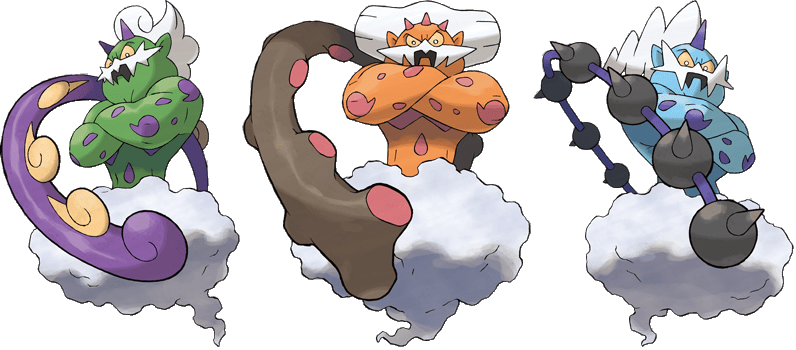
Tornadus • Thundurus • Landorus
Sugimori: “Mr Masuda asked for Pokemon based on Fūjin and Raijin, but the designs weren’t completed until late in the games’ development. I had a hard time figuring out how gods so closely resembling humans could become Pokemon. Asura statues have a really powerful presence, so I told the designer in charge to make their eyes large and intimidating. At first, Tornadus and Thundurus were designed as red and blue demons, but that was too similar to the designs of Sawk and Throh. As a result, Sawk and Throh’s horns were removed and replaced with eyebrows. Landorus wasn’t added until later when a change was made during the game’s development — he was designed as the god of land. In their official artwork, Tornadus and Thundurus are facing to the side, while Landorus is more symmetrical and facing forward — this was done to make Landorus stand out from the other two.”
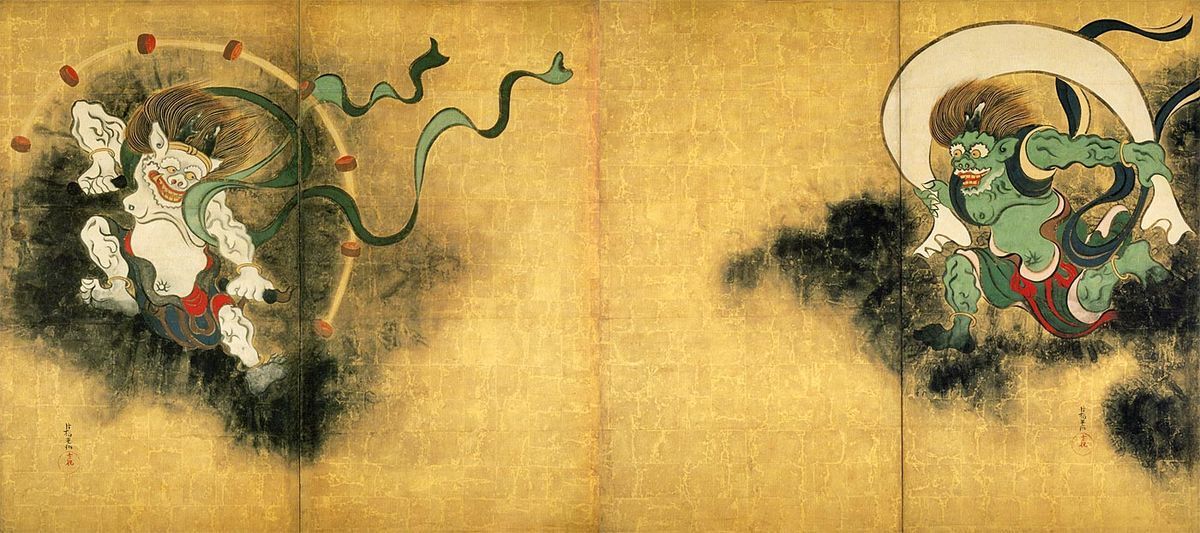
Dr Lava’s notes: In Japanese mythology and the Shinto religion, Fūjin is the Japanese god of wind, while Raijin is the god of lightning, thunder, and storms. Asuras are most simply described as Buddhist demigods or titans.

Sugimori says these figures all served as inspiration for the Forces of Nature trio. Before Landorus was conceived as the third member of the trio, Tornadus and Thundurus were originally designed as red and blue demons — Thundurus’ final design remained blue, so it would stand to reason that Tornadus’ original design was red in color.

Since I’m most interested in beta monster designs, the takeaway here is that in order to differentiate Tornadus and Thundurus from Sawk and Throh, Tornadus was changed from red to green, while Sawk and Throh originally had horns (like Thundurus and Tornadus) but they were removed and replaced with eyebrows. Note: Sawk and Throh’s design origins are further detailed in volume 201’s interview.
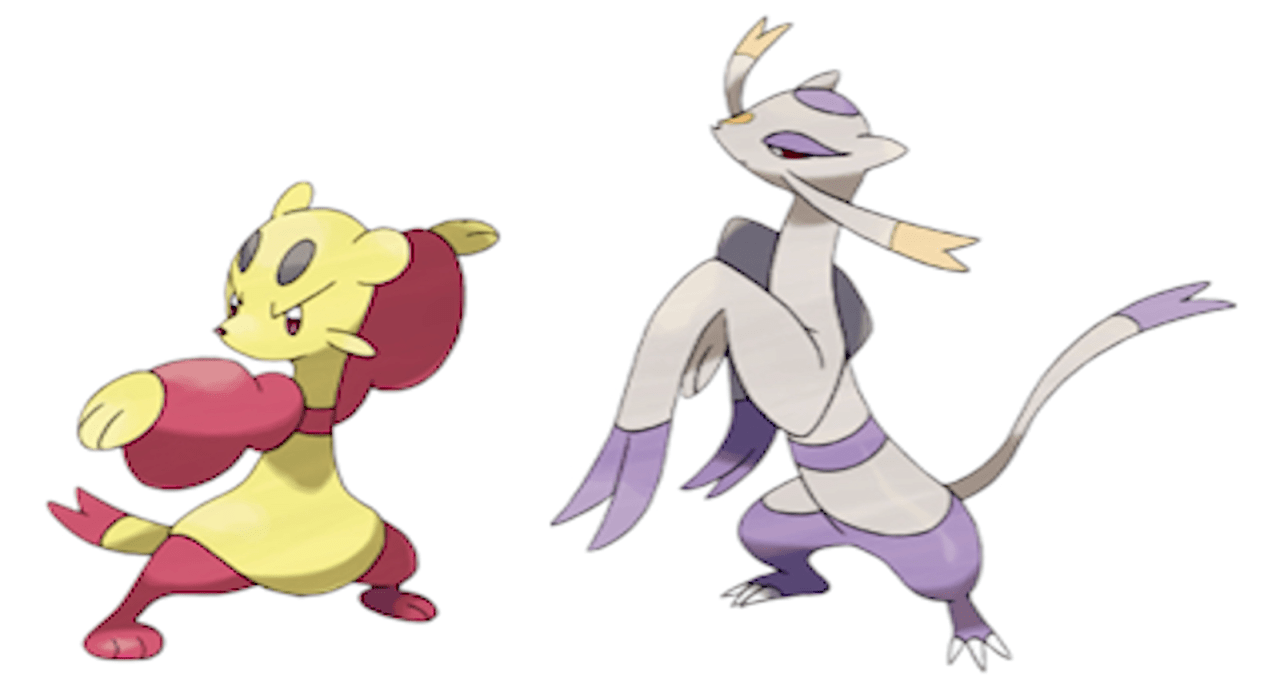
Mienfoo • Mienshao
Sugimori: “The games’ planners felt there weren’t enough Fighting type Pokemon, so they asked the monster designers to create more, which resulted in the creation of Mienfoo and Mienshao. Since so many of the pre-existing Fighting Pokemon resembled humans, they asked that this time we design animal-based creatures, so we came up with these designs inspired by short-tailed weasels. I decided to make these Pokemon in the Kung Fu style since that was something we hadn’t done before.”
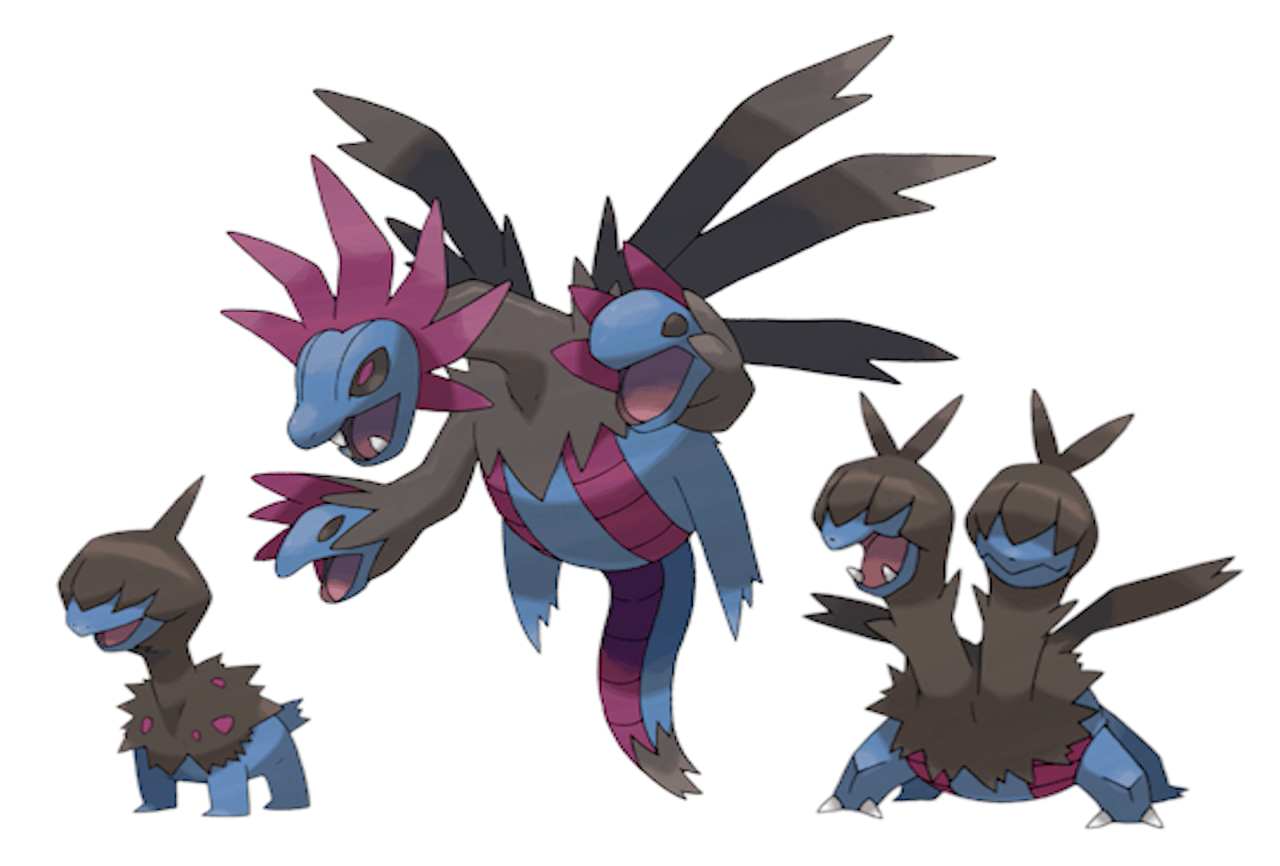
Deino • Zweilous • Hydreigon
Sugimori: “Our designer was struggling with this one for a while. The motif was supposed to be a war tank, and the purple stripes on Zweilous’ stomach are the leftovers of that early design. Initially, the designs weren’t really working, so we put them on ice — but later on in development, when orders came down for a powerful three-stage Dragon family, they were resurrected. After some discussion, we wanted the color to be somewhat unique, so we chose colors that makes it look tough. The aim was to recreate Yamata no Orochi (the mythical Japanese dragon with 8 heads), but so many heads can make a creature look disgusting. Thus the design of Hydreigon, with one true head, and whose arms and wings give it a silhouette that still looks like lots of heads. By the way, the arms that looks like heads don’t actually have their own individual brains.”
Unno: “Well when I heard that Hydreigon was modeled after Orochi, I told them it’s supposed to have 8 heads. Hydreigon has 3 heads (including arms), and 6 wings. That’s a total of 9.”
Sugimori: “That’s fine, this one has 9 — 1 better than Orochi.”
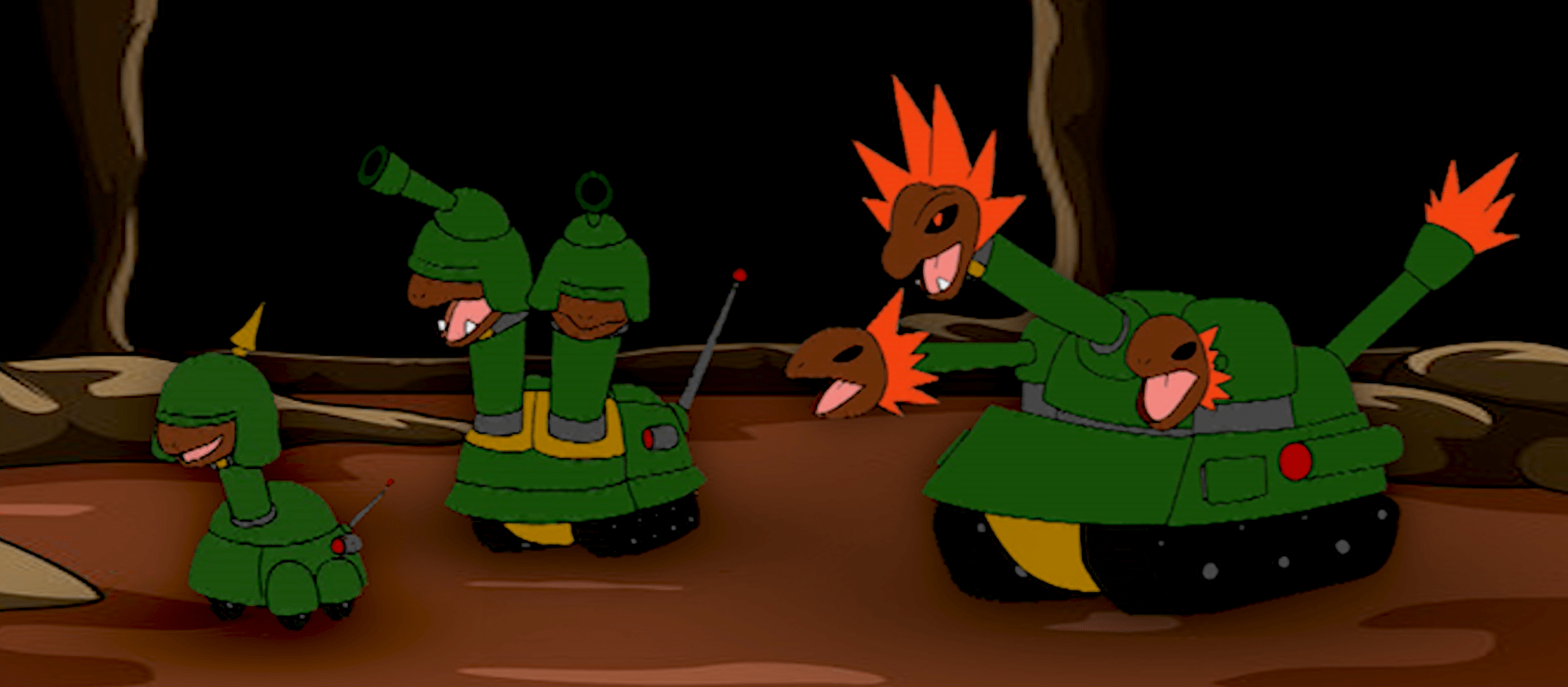
Dr Lava’s notes: Incredibly, the Hydreigon family was originally designed as a family of tank-like dragons. If these designs had made it into the release versions of Black and White, it seems likely that the Hydreigon family would have been dual-type Dragon and Steel. Sugimori states that the leftover tread marks are still visible on Zweilous’ underside, but they’re actually much more pronounced on Hydreigon.
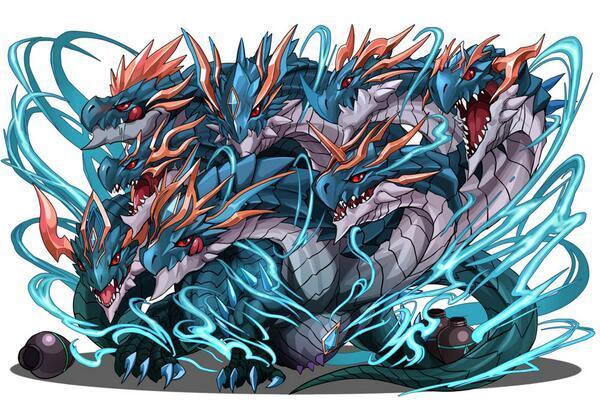
It’s also interesting that Sugimori reveals the family’s purple coloration wasn’t chosen until later in development, as this tells us that the dragons’ original color wasn’t purple. Since it was a tank motif, green seems like the most likely possibility — especially since all three dragons’ have green Shiny forms in the release versions. But with the limited information available in this interview, it’s impossible to be certain. The Yamata no Orochi Sugimori mentions is an 8 headed and 8 tailed dragon from Japanese mythology.
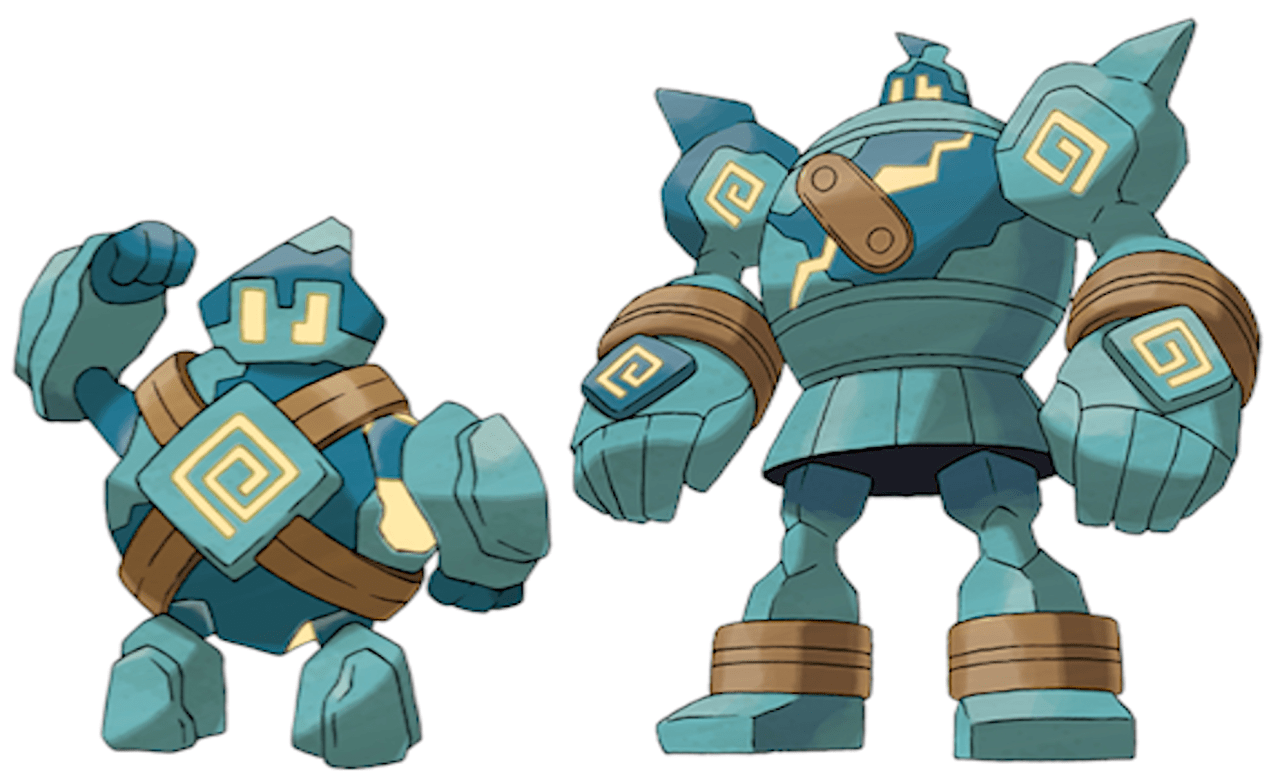
Golett • Golurk
Sugimori: “We created a Ghost-type that lives in historic ruins. A British designer created this one, but the idea for a Ghost-type Pokemon came about because Japanese people are already familiar with golems.”
Unno: “When I saw it for the first time, I liked the fact that the broken part of Golurk’s chest was joined together with a seal. Because they’re as old as the ruins they inhabit, energy might leak out of their bodies, so the uncontrollable power is sealed inside them. It’s an interesting idea — which wasn’t mine.”
Sugimori: “He designs and draws many detailed pages for every Pokemon he creates. He draws all types of poses: Golurk draws its limbs into its body, a normal idle pose, etc. There’s even one where Golurk draws in its limbs so it can fly. At first glance, it doesn’t look capable of flying, but thanks to this reference sheet, now Golurk can fly through the air! (laughs)”
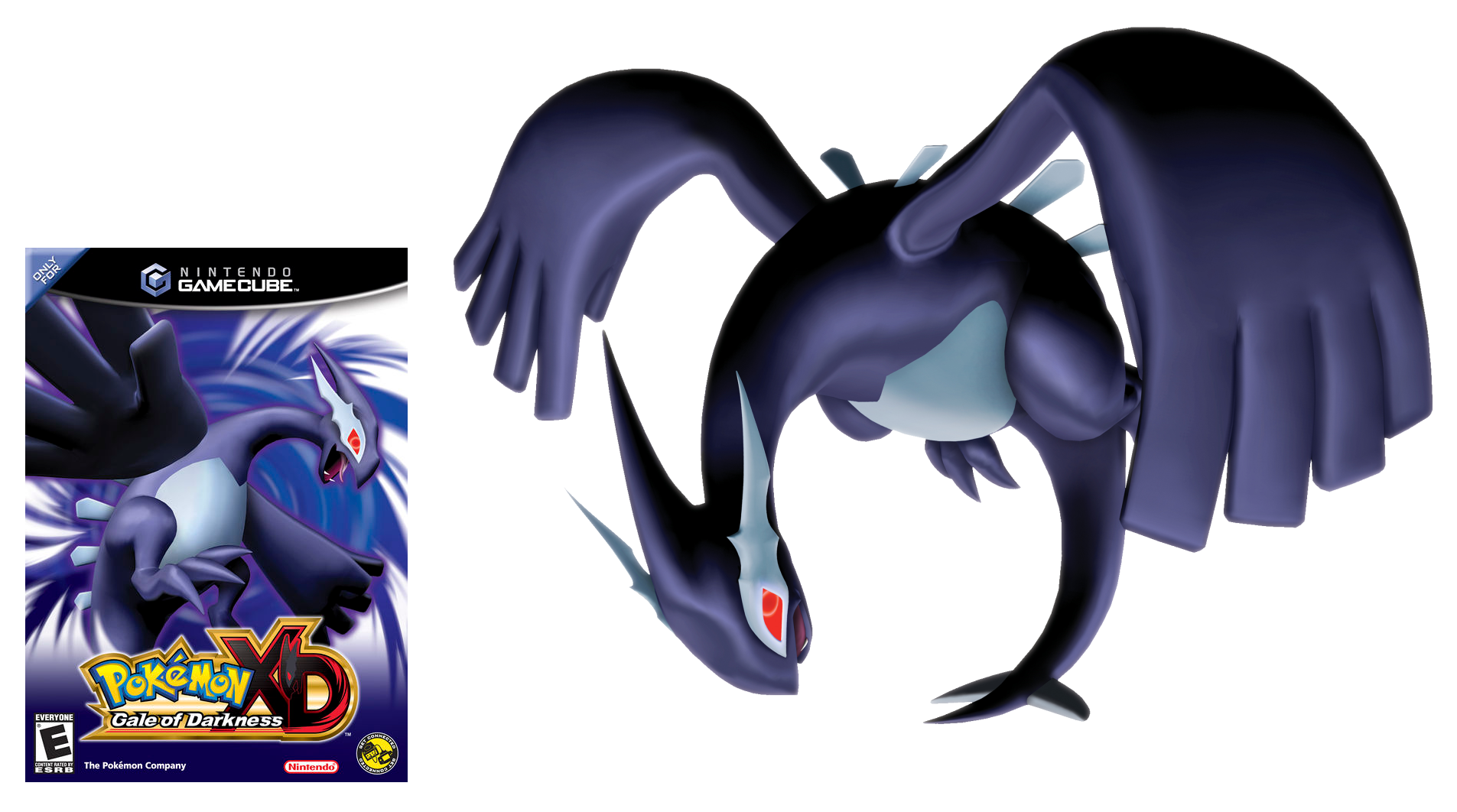
Dr Lava’s notes: The Englishman mentioned is James Turner, the first Westerner to join Game Freak’s team of monster designers. Turner designed seven Pokemon for Black and White: Golett, Golurk, Vullaby, Mandibuzz, Vanillite, Vanillish, and Vanilluxe. He also designed Shadow Lugia, a Pokemon exclusive to 2005’s Pokemon XD: Gale of Darkness.
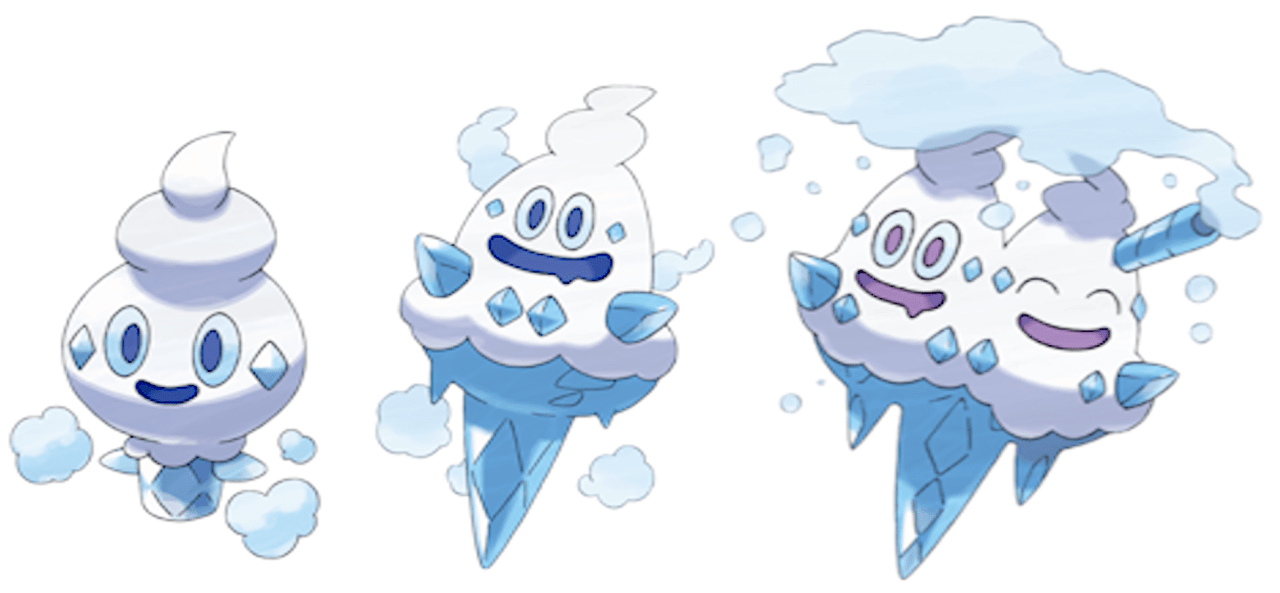
Vanillite • Vanillish • Vanilluxe
Sugimori: “Vanilluxe was designed by the same Englishman who created Golurk. We received orders to create a new Ice-type Pokemon, and after some discussion, we decided on another multiplication evolution. Then he suggested having an ice cream cup, which evolves into a cone, then into a cone with two scoops. We don’t create Pokemon based on food too often — it’s just difficult. For example, if we just paste a face onto a tomato, it ends up looking like a Yuru-kyara. But I thought this ice cream design actually worked pretty well.”
“By the way, the white ice cream part of the design is actually just a snowy cream covering a body of ice. There’s some concept art where the cream is removed and the ice body is revealed, but I’m not sure if the fans will ever get a chance to see it. But it might happen in the anime…”
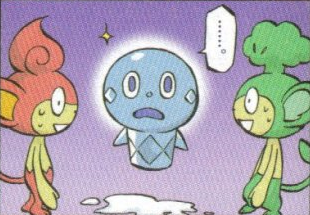
Dr Lava’s notes: The unreleased ice body design of Vanillite mentioned by Sugimori was actually first revealed in an issue of the Pokemon manga. Years later, on February 23 2019, James Turner tweeted images of Vanillite and Vanilluxe with their snow removed, with the caption, “When Vanillite is surprised it sometimes loses its snow covering.”

When a commenter asked if snowless Vanillite was canon, Turner confirmed that the snowless Vanillite shown in the manga is based on a drawing of his that is still in the reference sheets, and therefore the snowless designs should be considered canon (his words). This would mean these snowless forms aren’t beta designs, but rather they’re rarely seen states of their final designs.
Update: since its original publication on May 24 2019, it’s come to my attention that James Turner read this article and tweeted that “it was a good read.” Cheers James.
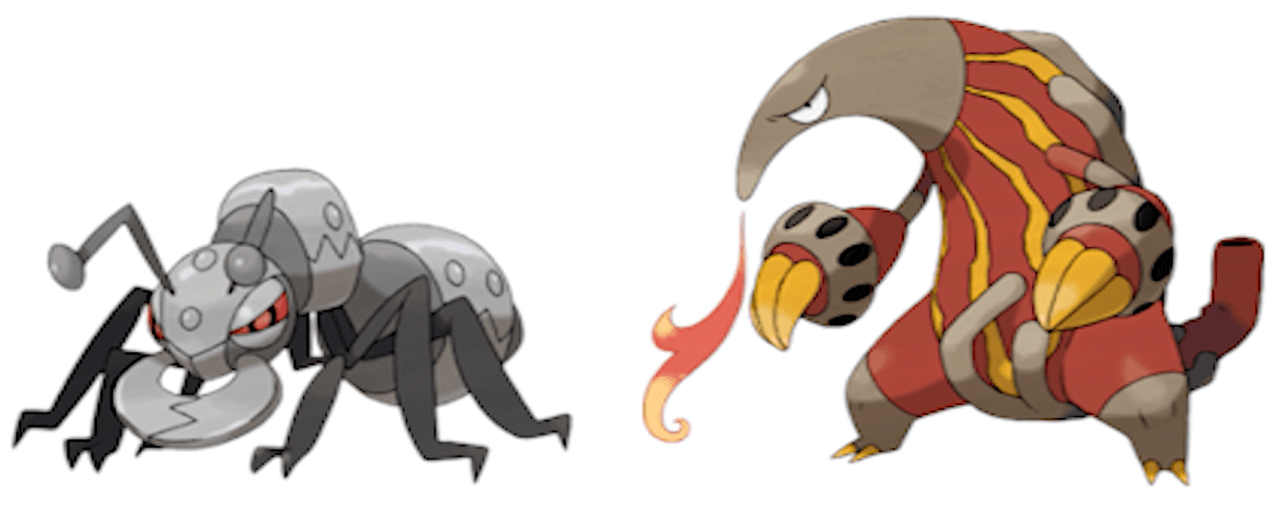
Durant • Heatmor
Sugimori: “Both designed by Sugimori. These two are counterparts, with one based on an ant, and the other an anteater. They can both be found on Victory Road. I had a very clear vision of ants that dug themselves a cave and an anteater that came in to prey upon them.”
Sugimori: “For a long time we’ve wanted to make an ant Pokémon that would be the smallest Pokémon, but this time I decided to focus on the design for Durant. Heatmor eats iron, so I incorporated elements of an iron works into its design.”
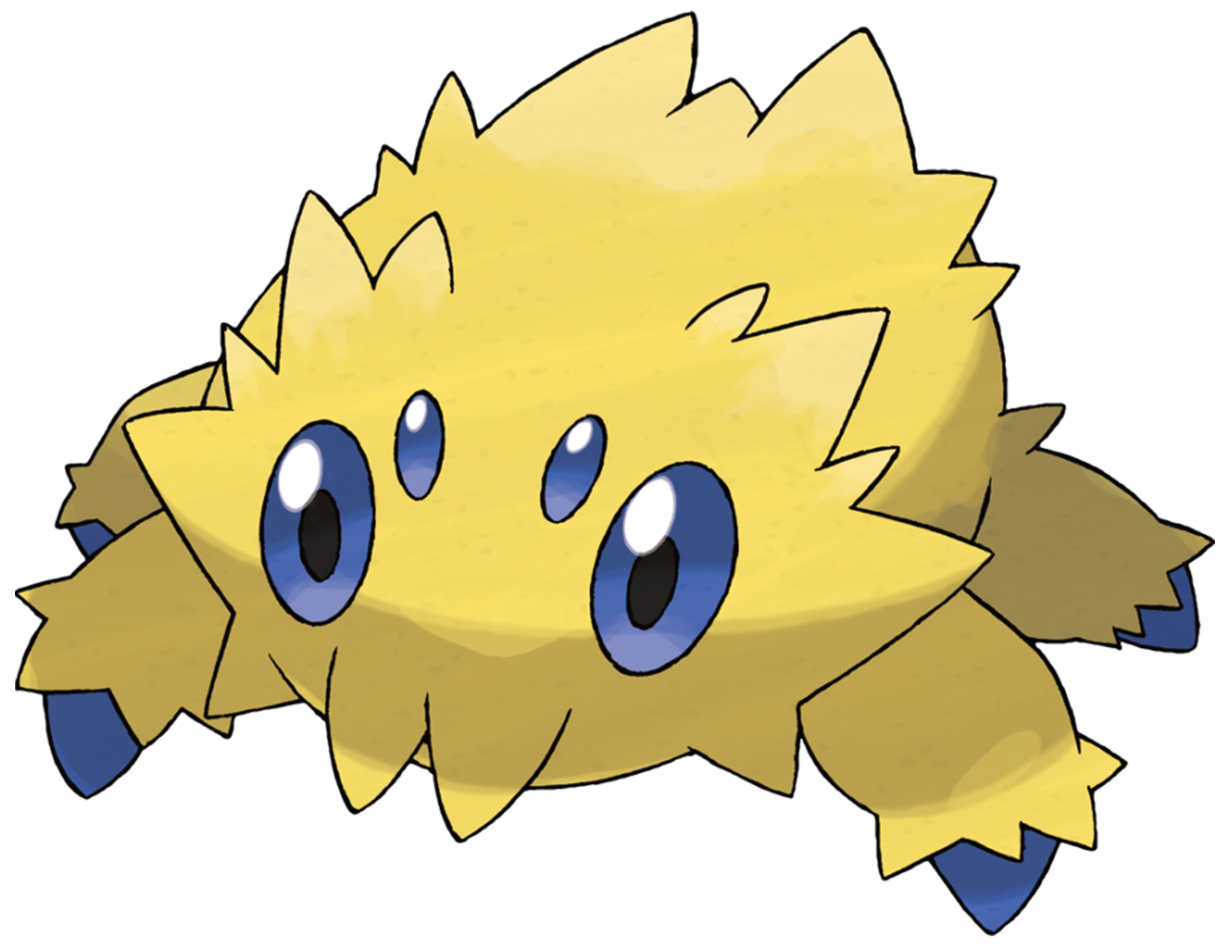
Dr Lava’s notes: So apparently Game Freak has long been considering an ant creature that could be the world’s smallest Pokemon. While Durant is 1 foot tall and weighs 72.8 pounds, Joltik was the smallest Pokemon in existence when this interview was conducted — standing just 4 inches tall and weighing 1.3 pounds. So this unrealized idea for a tiny ant Pokemon would have to be even smaller than that, possibly the size of an ant in the real world.
Sugimori doesn’t specify whether or not artwork for this miniature ant is presently taking up space in Game Freak’s art vault, so it’s unclear if it should technically qualify as a beta Pokemon. Either way, it’s certainly an interesting concept. Maybe the miniature ant never found its way into a finished Pokemon game because it’s difficult to imagine a tiny ant fighting — and especially defeating — even an average-sized Pokemon like Pikachu.

Tynamo • Eelektrik • Eelektross
Sugimori: “This one was designed by Mr Ohmura — he had an idea that making an eel into a monster would look really powerful, and that idea became a Pokemon. Ohmura said that he once caught a humongous eel in a nearby river and that it was disgusting, but that experience is what inspired his idea for this evolutionary line. The eel he caught actually inspired Eelektrik, who best represents that feeling of strong but disgusting. Then Tynamo was conceived of because we wanted the evolutionary line to reflect how an actual eel physically matures in the real world.”
Related Interview: Developers reveal the origins of Gen 5’s human characters
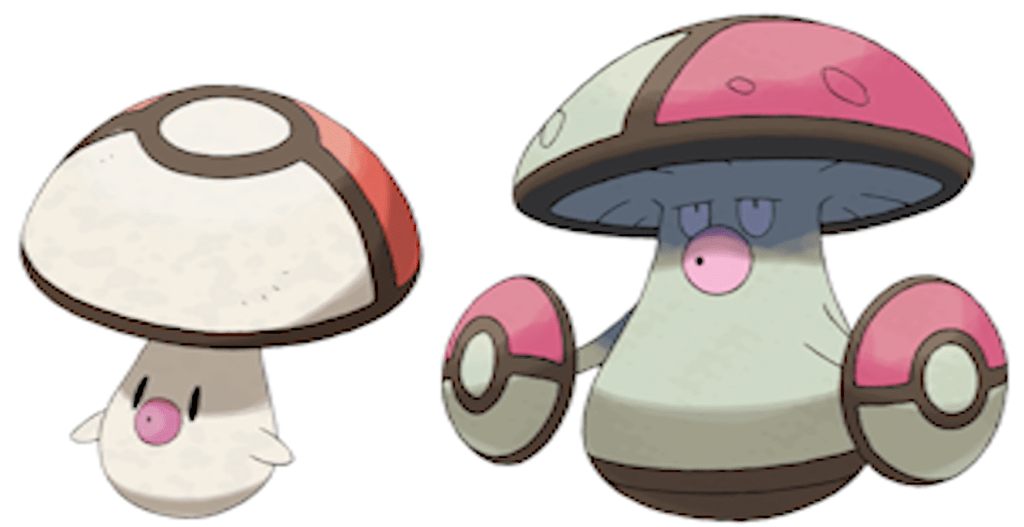
Foongus • Amoongus
Sugimori: “Foongus fools trainers into thinking it’s a Pokeball, but no one would make that mistake with Amoongus, so that was included in his name. The black dot at the center of its face is the mouth, which it uses to blow out spores.”
Dr Lava’s notes: Amoongus’ Japanese name is モロバレル, which includes a word meaning “to be found out, exposed.”
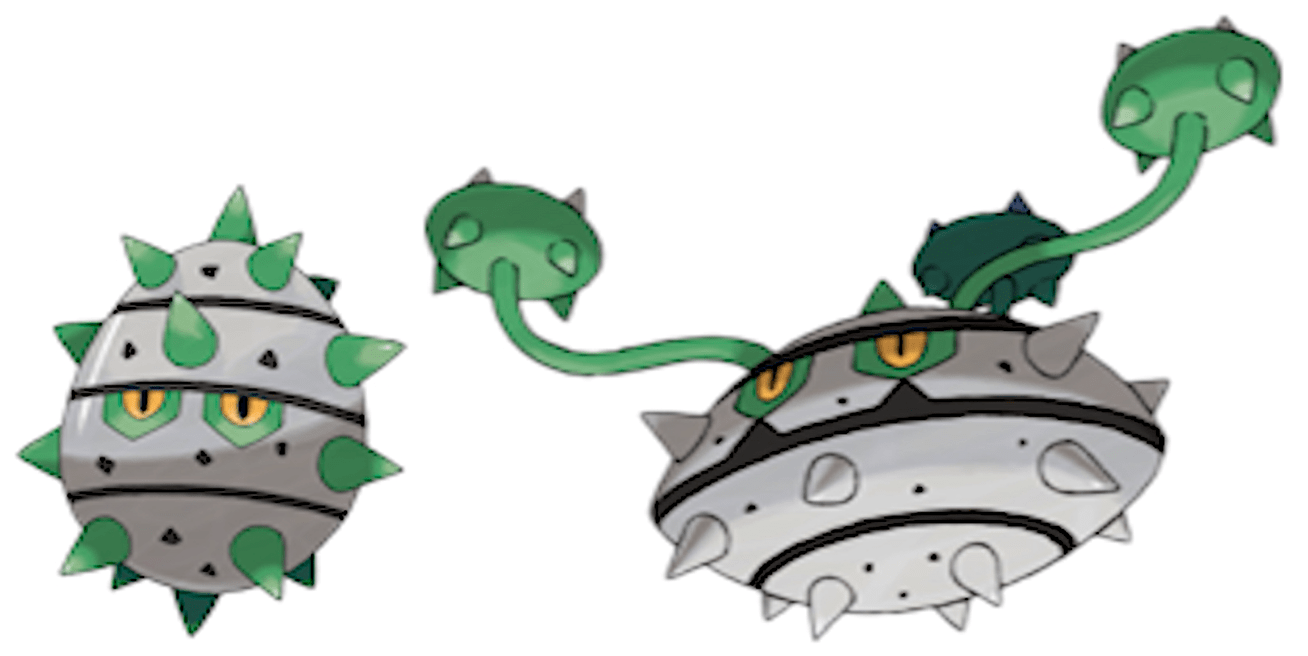
Ferroseed • Ferrothorn
Sugimori: “These two were created during the latter half of development, after an order came in for a dual-type Grass and Steel Pokemon. Ferroseed and Ferrothorn were designed by the same person as Foongus and Amoongus. The planners proposed the design be something like those seeds that sometimes stick to your clothes. We had the idea that large groups of these Pokemon would stick to rock faces.”
Dr. Lava’s notes: Some Pokemon got re-typed late in development for the sake of elemental balance — like Stunfisk, Frillish, and Jellicent. In a similar vein, it seems some Pokemon are created purely to fill a gap. Ferroseed and Ferrothorn were created because they games’ planners wanted Grass and Steel types, and this next Pokemon was created for a similar reason…
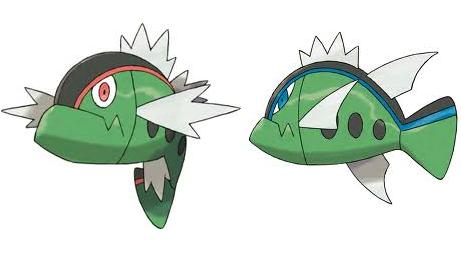
Basculin
Sugimori: “After realizing we didn’t have a relatively standard Water type Pokemon, we designed a fish that could eat you. Basculin is based on a bass, because New York is place where you can go bass fishing. We made two forms because we felt there was a shortage of fish Pokemon in the Pokedex.”

More Translations in Progress
And that wraps up Nintendo Dream volume 205’s feature on the origins of Gen 5 Pokemon. I’m still looking for more issues of Nintendo Dream, so if you’ve got a lead on any of these magazines — or want to contact me for any reason at all — you can find me on Twitter where I’m @DrLavaYT.
Translations of volume 201’s interview and volume 204’s interview have now been published as well. But there are lots more Japanese interviews that need to be located and purchased from Japan, then translated by a professional interpreter. So if you’d be willing to sign up for a monthly pledge on my Patreon page, it would really make a huge difference in helping make more translations possible.
Thank you to Patreon Supporters
I want to thank my Patreon supporters, who help fund the continuation of my YouTube channel and this website: Reoko, Brad Benson, Boreas Bear, Besipeitl, Jacky H, Evan Miller, Elvin Alfonso, Todesspiel, Austin Elliot, KissShot, HelpMePlease, Kenji Castro, Jonathan Henn, and Justin Stackhouse. Without their support, none of this would have been possible. Cheers guys, and to everyone who took the time to read this article.
Related Articles:
• Gorochu: Developer Translations and the 2019 Leak
• Gold & Silver’s Leaked 1997 Demo: All 1004 Sprites
• How Three Monsters in a 1997 JP Magazine Became Pokemon

